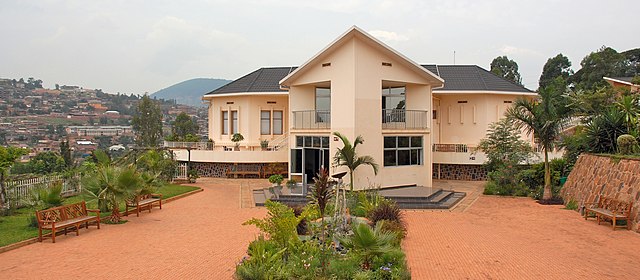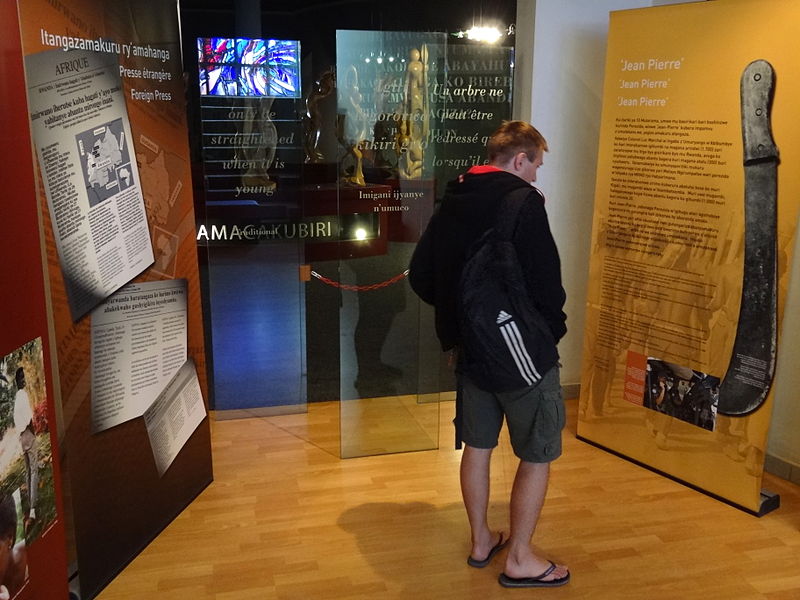- About Ramapo
- Academics
- Admissions & Aid
- Student Life
- Athletics
- Alumni
- Arts & Community
- Quick Links
- Apply
- Visit
- Give
Kwibuka 30, Panel 16
The Kigali Genocide Memorial was built to remember the 1994 Genocide Against the Tutsi. The memorial was built in the City of Kigali to honor the fallen and to teach about the genocide.
Kigali Memorial
The Kigali Genocide Memorial was built on a hill in the center of the Rwandan capital of Kigali in 1999. Since 2001, it has served as a final resting place for many victims of the genocide. The memorial opened to the public in 2004, on the 10th anniversary of the genocide. The Kigali Memorial was built for survivors to remember, visitors to learn about the genocide, and Rwandans to work towards reconciliation. The site now serves as the final resting place for some 250,000 victims. It is divided into three sections: one pertaining to the genocide, its history, and legacies, a children’s memorial, and an educational center whose scope extends to other genocides. The Kigali Memorial has four Primary objectives:
- To Provide a dignified place of burial for victims of the genocide against the Tutsi.
- To Inform and educate visitors about the causes, implementations, and consequences of the genocide.
- To teach visitors about what we can do to prevent future genocides.
- To provide a documentation center to record evidence of the genocide, testimonies of genocide survivors, and details of genocide victims.
Remembering the fallen, the survivors, and everything people had attempted to stop the genocide is important. Building statues, museums, and memorials can assist in raising awareness among the public in Rwanda and around the world. Educational events and commemorations may contribute to the prevention of future genocides. Memorials can be used solely to remember the past or they can be included into facilities like memorial hospitals or schools. They can be extremely important in learning from the past and developing as a society. The Kigali Memorial specifically helps communities remember past events and become educated on the genocide.
Quick Links
Kigali Genocide Memorial: Our Story
Bibliography
Buckley-Zistel, Susanne. “Remembering to Forget: Chosen Amnesia as a Strategy for Local Coexistence in Post-Genocide Rwanda.” Africa: Journal of the International African Institute 76, no. 2 (2006): 131–50.
Herr, Alexis. Rwandan Genocide: The Essential Reference Guide. Santa Barbara. California: Ab-Clio, 2018.
Mayo, James M. “War Memorials as Political Memory.” Geographical Review 78, no. 1 (January 1988): 62-75.
Sodaro, Amy. “The Kigali Genocide Memorial Centre: Building a ‘Lasting Peace.” In Exhibiting Atrocity: Memorial Museums and the Politics of Past Violence, 84–110. Rutgers University Press, 2018.
Photo Source
Dave Proffer. Kigali Genocide Memorial Centre. WikiCommons, 2007.
Adam Jones, PhD. Visitor Views Exhibits at Genocide Memorial Center – Kigali – Rwanda. WikiCommons, 2012.
Copyright ©2025 Ramapo College Of New Jersey. Statements And Policies. Contact Webmaster.



Follow Us!